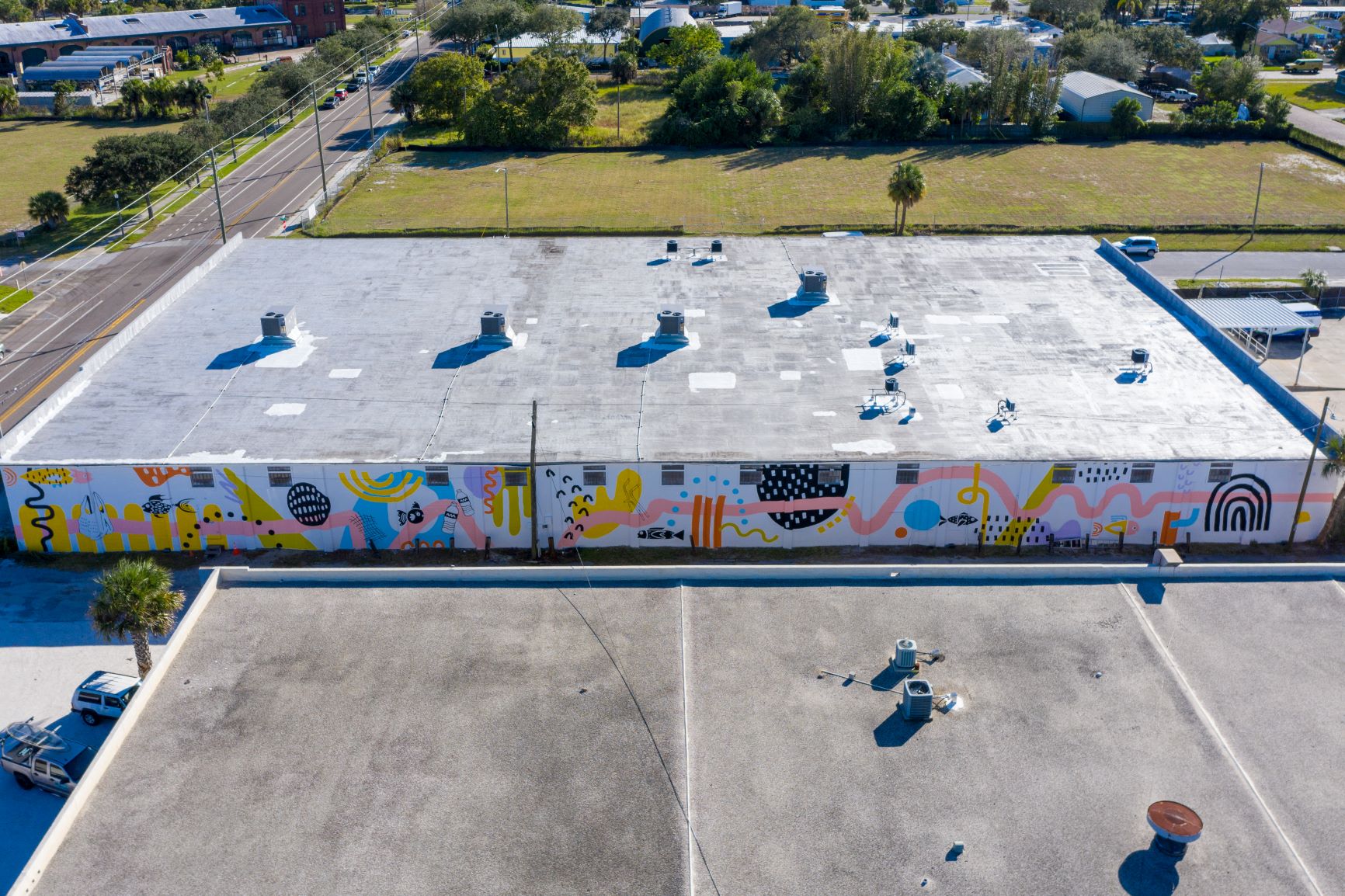
Lois Dodd demonstrates that artwork-generating isn’t a job or an occupation, it is a way of daily life
by Cynthia Shut
Most people seem ahead to retirement, commonly setting up all over age 65, but artists generally proceed to operate, some-times for a long time for a longer period, even up right up until their ultimate hrs. Illustrations abound in the course of art heritage of creatives who were actively evolving—inventing new techniques and exploring new media—in their elder a long time, even as their wellbeing declined. For many people, the act of generating artwork is restorative, offering a font of strength that can be renewed day by working day, calendar year following yr, enabling them to retain their productiveness as they age.
When the New Jersey-born modernist painter Lois Dodd was asked about her “practice,” she bristled at the word. “Doctors and lawyers have a ‘practice,’ artists have a lifetime,” she mentioned. This interaction transpired all through an on line job interview and dialogue with Dodd and artist Eric Aho, in conjunction with the 2020 exhibition “Figuration Never ever Died: New York Painterly Painting 1950–1970,” at Vermont’s Brattleboro Museum (see a movie of the interview at bit.ly/dodd-brattleboro). It was a uncommon minute interrupting the typically tranquil demeanor of the 95-calendar year-aged Dodd, who sat patiently answering myriad concerns from the participating audience members. She was open, considerate, and engaged, just as she was all through her job interview for this posting, in spite of the pressure of making ready for her yearly summer months changeover to Maine.
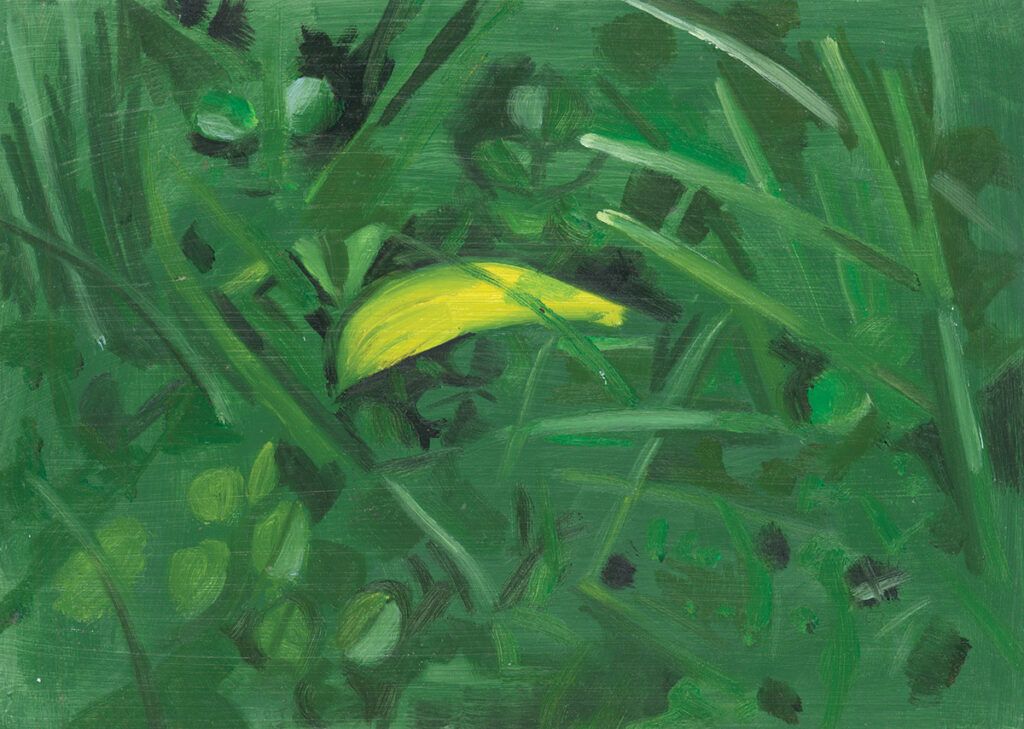
(2010 oil on aluminum flashing, 5×7)
© LOIS DODD, COURTESY ALEXANDRE GALLERY, N.Y.
THE ARTIST’S Lifetime
Whilst Dodd thinks of artmaking as integral to her life—more so than a “practice” or career—certain academic and expert milestones are worth noting.
At a youthful age, Dodd lost her mother to cancer and, soon right after, her father, a service provider marine, died at sea. Fortuitously, her older sister was presently acting as head-of-house throughout the father’s voyages, and as such, she was capable to preserve some feeling of loved ones steadiness and continuity. The artist attended higher college in Montclair, N.J., which she recollects acquiring “a attractive artwork room with a skylight.” She figured out from her artwork teacher that she could go after her inventive passions, tuition totally free, at the Cooper Union, in Manhattan’s East Village. Like her shut good friend and colleague, Mel Leipzig, Dodd realized her craft at this institution. It was also at Cooper that she met her sculptor husband, Monthly bill King (1925–2015).
Dodd was an energetic member of the avant-garde Tenth Road artwork scene, a free-knit coalition of artist-run galleries functioning with small budgets and presenting a 1950s–60s alternative to the high-finish, extra doctrinaire gallery process. She was the only woman founder of the cooperative Tanager Gallery, where by she exhibited from 1952 to 1962. The artist supplemented her artmaking with a teaching posture at Brooklyn Higher education right until her retirement in 1992.
“I cannot invent nearly anything. I need to have to notice from everyday living.”
—LOIS DODD
Dodd’s to start with painting to enter a museum collection was The Check out By means of Elliot’s Shack Wanting South (1971), acquired by New York City’s Museum of Present day Art. With her common endurance and equanimity, she responses, “If you wait around extensive adequate, the environment comes to you.”
These times, Dodd’s paintings of scenes from her apartment in New York City’s Reduce East Facet and from her family members property in Blairstown, N.J., in the vicinity of the Delaware H2o Hole, as perfectly as views of the woods and gardens all over her summer months retreat in Maine, are a great deal in need. She’s presently rep-resented by the prestigious Alexandre Gallery, in Manhattan, and has been integrated in lots of solo and team exhibitions because the 1950s, but it wasn’t until finally 2013, when Dodd was 85, that she was given her initial museum retrospective, titled “Catching the Mild,” at the Kemper Museum of Present-day Artwork, in Kansas City.
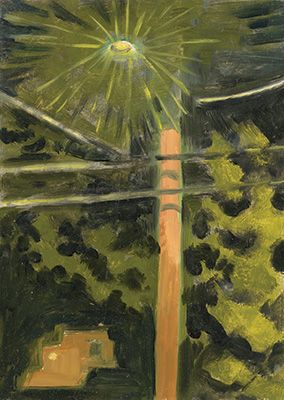
(2011 oil on aluminum flashing, 7×5)
© LOIS DODD, COURTESY ALEXANDRE GALLERY, N.Y.
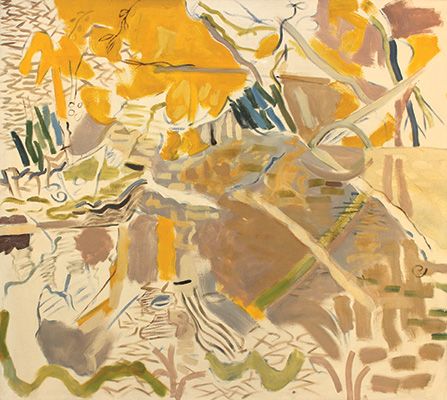
(1962 oil on linen, 58×65)
© LOIS DODD, COURTESY ALEXANDRE GALLERY, N.Y.
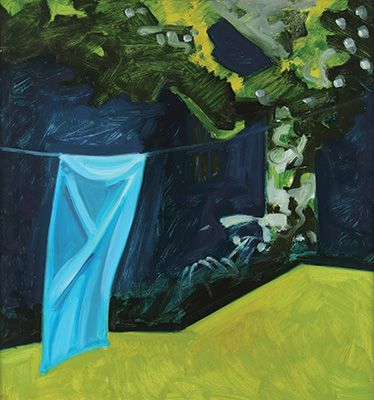
(1982 oil on Masonite, 16×15)
© LOIS DODD, COURTESY ALEXANDRE GALLERY, N.Y.
Variations AND CONSTANTS
Dodd’s compositions are a merchandise of, as she places it, “finding and framing the daily.” There is a naturalness, an unforced high quality in all the artist’s work. “I really don’t want to established factors up,” she states. As a consequence, her paintings experience inevitable—Zen-like. They simply are. The topic issue of her operate is wide, but a constrained tonal color palette is a signature component running by way of the artist’s oeuvre.
For her early perform, Dodd would make drawings on site and then return to the studio to paint the compositions on a more substantial scale, using oil on linen canvas. “I tried using acrylic,” says Dodd, “but it felt like chewing gum.”
It took the artist some time to adapt to immediate painting en plein air without having preliminary drawing. She observed working on gessoed Masonite panels, no even larger than 20 inches on the longest facet, authorized her to get started and end a painting in just one outing. “It has to be a single session,” she suggests. “You start out and hold going until eventually you finish.”
A student released Dodd to aluminum flashing, a roofing design substance, as a painting surface area. Dodd, who performs alone and has no studio assistant, suggests, “I like to do all the chores—gessoing and sanding the aluminum surface—myself.” Sunflower Petal in Grass and Night time Streetlight, Rockgarden Inn, both equally painted on aluminum flashing, are tiny gems.
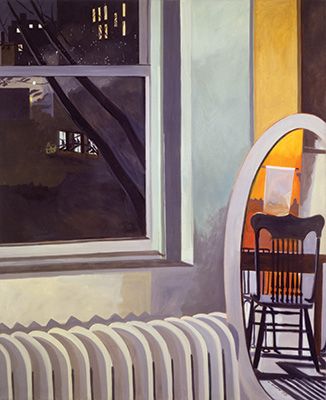
(1973 oil on linen, 66×54)
© LOIS DODD, COURTESY ALEXANDRE GALLERY, N.Y.
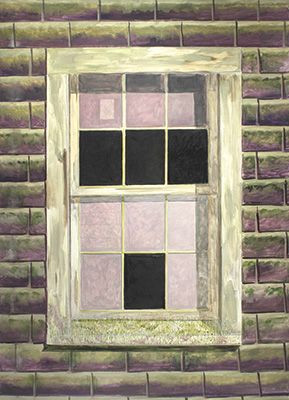
(2014 oil on linen, 66×48)
© LOIS DODD, COURTESY ALEXANDRE GALLERY, N.Y.
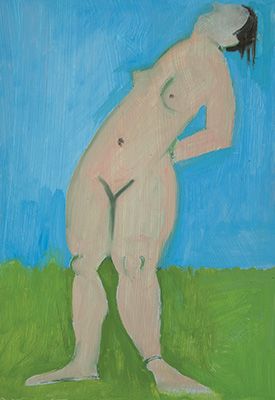
(2020 oil on aluminum flashing, 7×5)
© LOIS DODD, COURTESY ALEXANDRE GALLERY, N.Y.
In addition to switching her method and painting area above the years, Dodd created her design and style and compositional solution. Her 1962 portray Pond has a free, open-air, gestural high quality that would seem closer in model to the function of Willem de Kooning (1904–97) than to Dodd’s much more right observational, figurative work that followed. Night Sky Loft and Get rid of Window are substantial oil paintings—both of which use a window as the main structural element—demonstrate very various compositional ways.
A single attribute that stays continual in her get the job done, nevertheless, is an egalitarian method to her issue matter. In a painting by Dodd, a one piece of laundry hanging on a line retains as significantly significance as 1 of her not often existing human figures. Blue Towel is animated by a slight breeze, when in Nude Leaning Again – Blue Sky, the figure is caught motionless, wedged between the top rated and base edge of the body. Dodd also tends to close in on her focal place. Landscapes, from this artist’s perspective, are not grand vistas stretching into considerably horizons—and her uniform tonal excellent obliterates the regular improvements of sunlight and shadow, producing the image timeless.
In normal, Dodd’s paintings are like haiku or meditations. They radiate a peaceful perception of quiet—a spot of retreat, which we can all use a tiny a lot more of in our lives.

